|
Note: This was supposed to be out last week, but then the Kobe Bryant tragedy happened, and as a native Angeleno, that was a lot to deal with, so I put the post off to this week. The Land That Time Forgot is a classic 1918 trilogy (technically combined into a single volume in 1924 and itself part of the Caspak trilogy) in which a hardy bunch of Americans and Brits hijack a U-boat in the middle of WWI and find themselves in a weird island with a bunch of prehistoric creatures including various purported stages of human evolution living as distinct tribes. The trailer for the 1975 movie tells you that you can learn the "secrets of evolution." I have never seen the movie, but since I liked The Valley of Gwangi, which I watched on a mobile projector displayed on a bedsheet draped over the soccer mom van of the education department of the LACM, I am sure that it is of high cinematic quality in spite of its Rotten Tomatoes rating. These movies capture a certain affinity for the notion that pockets of animals thought to be long-extinct might exist, and indeed there are various cryptozoological monsters themed around this, like the mokele-mbembe, based on the notion of a sauropod-like beast living in the depths of the jungles of the Congo. For some reason, nobody's ever come up with a cryptozoological creation based on a temnospondyl, which seems like a real missed opportunity to put a 3-meter amphibian in the Mississippi River, and I am not proposing one now, although as I have told some people in person, I am amenable to the idea of donning a temnospondyl body suit and cruising around a body of water. Temnospondyls are not forgotten by time - if anything, they are just forgotten, period - but there are a few records of lineages where one taxon shows up way after its compatriots were thought to have kicked the can. We call these "relict taxa," a name obviously referring to the remnant of something much more common or widespread in earlier days (which were usually better days if you were a temnospondyl, back when the world was warm and humid and probably humming with crunchy invertebrates). Edopoids, already regarded as one of the more primitive temnospondyl groups, are one of the few for which a relict taxon is known: Nigerpeton, aptly named for Niger from which it is known.
AnatomyEdopoids have some pretty weird anatomy already, but Nigerpeton in particular has a number of distinct autapomorphies. For example, it has two large openings at the tip of snout that you might think are the nostrils, but the nostrils are way far back (normal for edopoids) as a result of the enlargement of the premaxillae; the openings at the front are actually for accommodating the fangs from the front end of the lower jaws, a feature that otherwise only shows up in Mesozoic temnospondyls. Accompanying the enlarged premaxillae is a row of enlarged teeth adjacent to the marginal tooth row, which is matched by a corresponding row on the maxilla, which is expanded both inwards and outwards. These should not be confused with the normal palatal dentition, either the enlarged "fangs" of the vomer, palatine, and sometimes the ectopterygoid or with the row of teeth on the palate of similar size to the marginal teeth that runs along the maxilla in lots of Mesozoic temnospondyls. There are other Paleozoic temnospondyls with swelling of the maxilla, which often accommodates what we refer to as a 'caniniform region' where the marginal teeth in that region are much larger (e.g., Eryops, trematopids), but those taxa don't have an extra set of teeth. Note: as pointed out in the comments by David, it's questionable whether there are actually openings at the tip of the snout for the mandibular fangs or if it's just a thinly ossified area that got weathered (suggested by Sidor, 2013). Chris suggested that it could be ontogenetically or intraspecifically variable and should be questionably regarded as an autapomorphy.
Up next week: The posts are probably going to get a little more sporadic; these Bayesian stats problem sets I have take a while... I'm still mulling over the next theme (edopoids was pretty random), but I'm thinking about talking about some classic temno-rich localities! Refs
Jocelyn Falconnet
2/5/2020 02:51:39 am
Hi Bryan,
Bryan Gee
2/7/2020 09:24:01 am
Hi Jocelyn, thanks for the factoid - very much appreciated!
David Marjanović
2/5/2020 12:40:46 pm
"Nigerpeton is the newest edopoid to be named and the only one named in the 21st century"
Rhaskia
7/26/2021 09:01:40 pm
It gives off quite an interesting look with its teeth through the skull and the far back nostrils.
David Marjanović
7/27/2021 11:04:18 am
The teeth did *not* go through the skull in Nigerpeton. They went pretty far into the palate, but not through. The first of the three incomplete skulls that have been found is so eroded the top of the snout simply isn't there, so people extrapolated from the holes in the palate and the fact that the teeth do go through the skull in one or two other temnospondyls (Mastodonsaurus in particular). A complete snout was published in 2013; it is not pierced. Comments are closed.
|
About the blogA blog on all things temnospondyl written by someone who spends too much time thinking about them. Covers all aspects of temnospondyl paleobiology and ongoing research (not just mine). Categories
All
Archives
January 2024
|
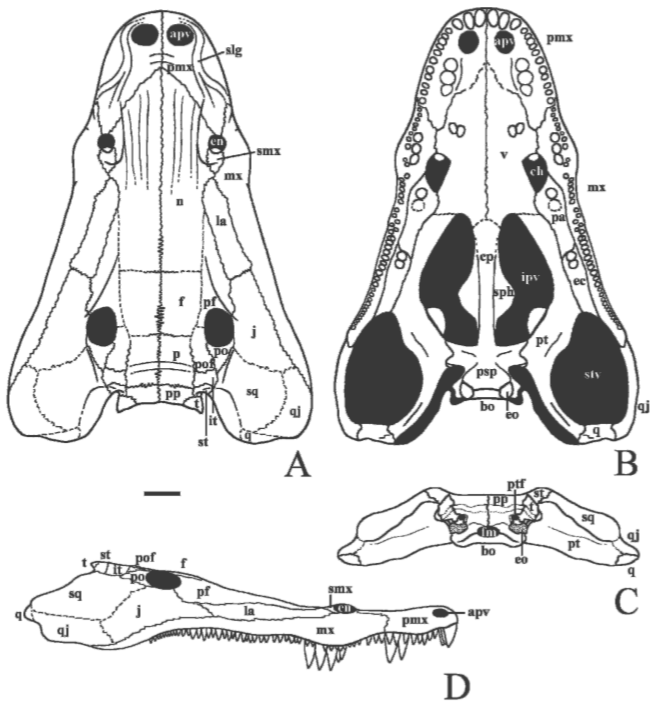
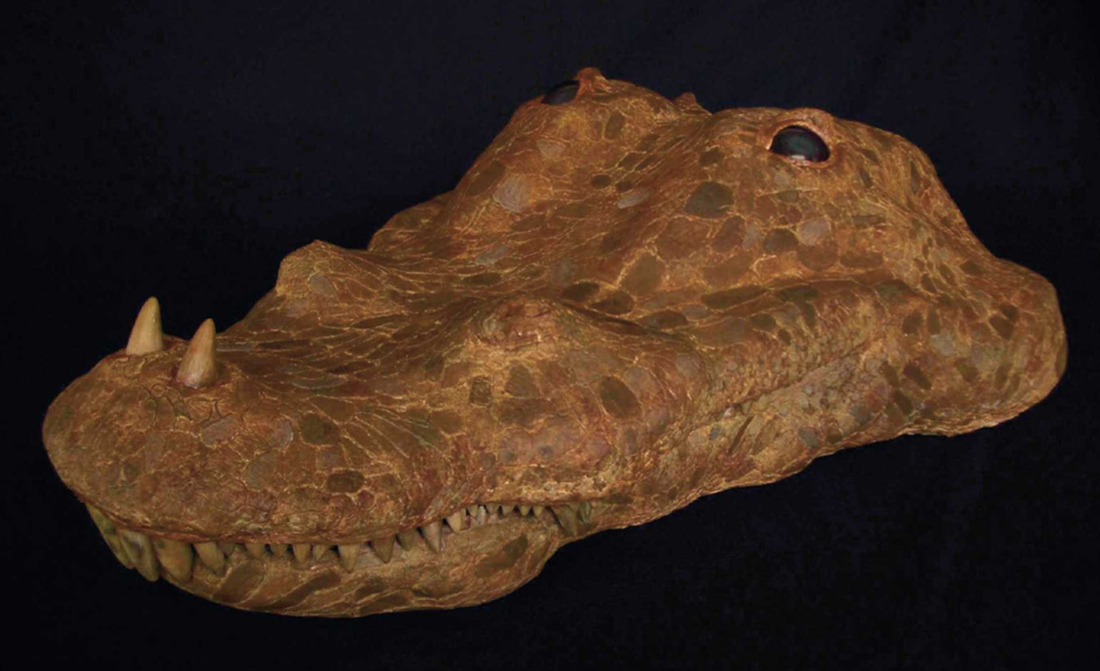
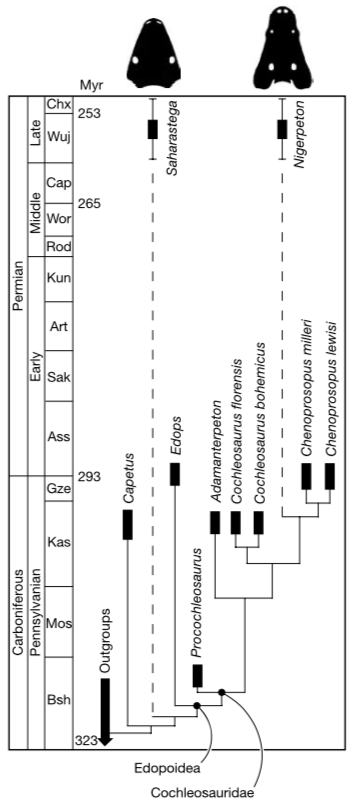
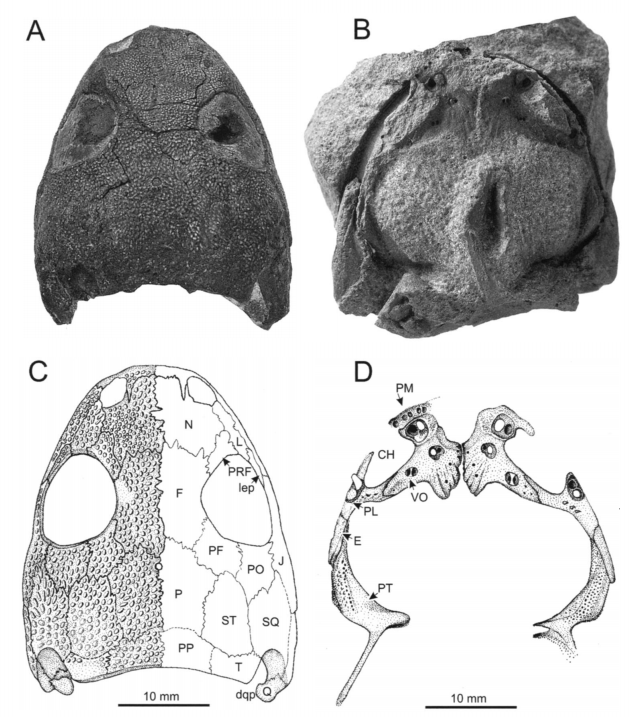
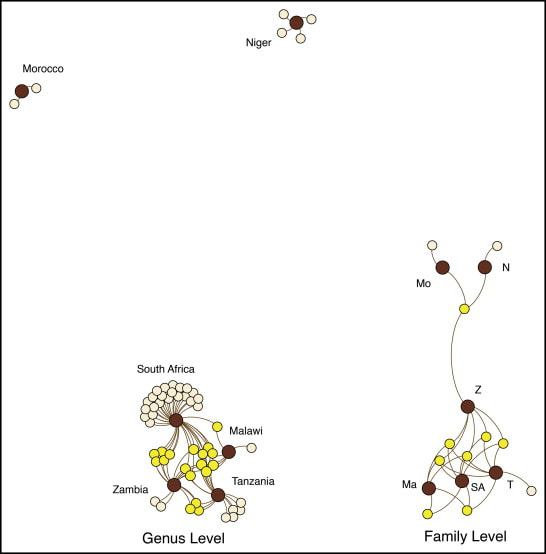
 RSS Feed
RSS Feed
